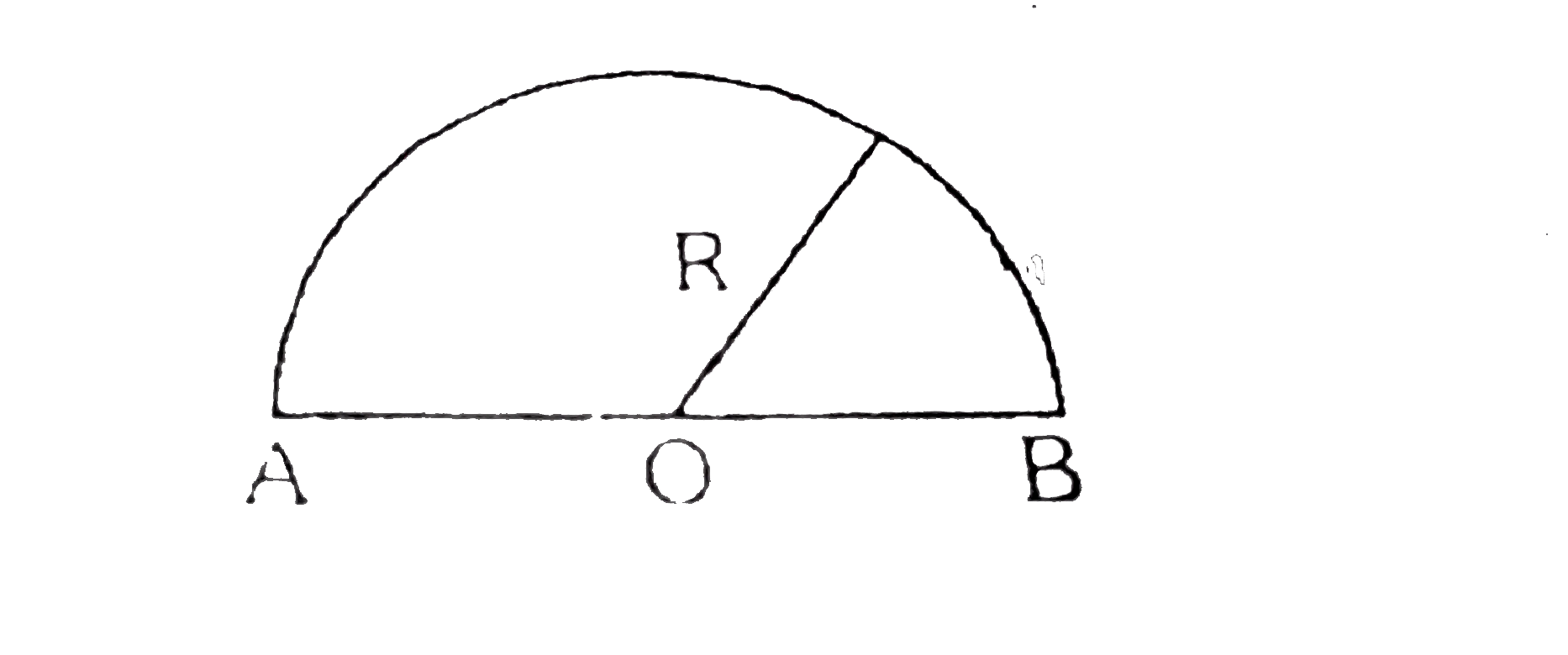The equation of one dimensional motion of the particle is described in column I. At t=0, particle is at origin and at rest. Match the column I with the statement in Column II.
Column IColumn II(A)x=(3t2+2)m(p)Velocity of particle at t=1s is 8m/s(B)v=8tm/s(q)Particle moves with uniform acceleration(C)a=16t(r)Particle moves with variable acceleration(D)v=6t−3t2(s)Particle will change its direction some timeSolution in Gujrati
The correct Answer is:(A)-q, (B)-p, q (C)-p, r, (D)-r, s
[A]X=3t2+2⇒V=dxdt=6t⇒a=d2xdt2
[B]V=8t⇒a=dvdt=8
[D] For changing the direction 6t−3t2=0
⇒t=0,2 sec
Topper's Solved these Questions
- KINEMATICSBOOK - ALLEN CHAPTER - KINEMATICSEXERCISE - Assertion-Reason
20 Videos
- KINEMATICSBOOK - ALLEN CHAPTER - KINEMATICSEXERCISE - Comprehension#1
3 Videos
- KINEMATICSBOOK - ALLEN CHAPTER - KINEMATICSEXERCISE - EXERCISE-02
57 Videos
- ERROR AND MEASUREMENTBOOK - ALLEN CHAPTER - ERROR AND MEASUREMENTEXERCISE - Part-2(Exercise-2)(B)
22 Videos
- KINEMATICS (MOTION ALONG A STRAIGHT LINE AND MOTION IN A PLANE)BOOK - ALLEN CHAPTER - KINEMATICS (MOTION ALONG A STRAIGHT LINE AND MOTION IN A PLANE)EXERCISE - BEGINNER S BOX-7
8 Videos
Similar Questions
Assertion: A projectile is thrown with an initial velocity of (aˆi+bˆj)m/sec. If range of projectile is maximum then a=b.
Reason: In projectile motion, angle of projection is equal to 45∘ for maximum rang econdition.
View SolutionDistance is a scalar quantity. Displacement is a vector quqntity. The magnitude of displacement is always less than or equal to distance. For a moving body displacement can be zero but distance cannot be zero. Same concept is applicable regarding velocity and speed. Acceleration is the rate of change of velocity. If acceleration is constant, then equations of kinematics are applicable for one dimensional motion under the gravity in which air resistance is considered, then the value of acceleration depends on the density of medium. Each motion is measured with respect of frame of reference. Relative velocity may be greater/ smaller to the individual velocities.
A particle moves from A to B. Then the ratio of distance to displacement is :-

View SolutionA particle is moving in a plane with velocity given by →u=u0ˆi+(aωcosωt)ˆj, where ˆi and ˆj are unit vectors along x and y axes respectively. If particle is at the origin at t=0. Calculate the trajectory of the particle :-
View SolutionA cube has a side of length 1.2×10−2m. Calculate its volume.
View SolutionA football player kicks a ball at an angle of 30∘ with an initial speed of 20 m/s. Assuming that the ball travels in a vertical plane, calculate (a) the time at which the ball reaches the highest point (b) the maximum height reached (c) the horizontal range of the ball (d) the time for which the ball is in the air, (g=10m/s2)
View SolutionA particle is moving with a velocity of v=(3+ 6t +9t^2) m/s . Find out (a) the acceleration of the particle at t=3 s. (b) the displacement of the particle in the interval t=5s to t=8 s.
View SolutionAcceleration of a particle in x-y plane varies with time as a=(2t hati+3t^2 hatj) m//s^2 At time t =0, velocity of particle is 2 m//s along positive x direction and particle starts from origin. Find velocity and coordinates of particle at t=1s.
View SolutionA particle in moving in a straight line such that its velocity is given by v=12t-3t^(2) , where v is in m//s and t is in seconds. If at =0, the particle is at the origin, find the velocity at t=3 s .
View SolutionA particle moves on x-axis with a velocity which depends on time as per equation v=t^(2)-8t+15(m//s) where time t is in seconds. Match the columns.
View SolutionMotion of a particle is given by equation S=(3t3+7t2+14+t+8)m, The value of acceleration of the particle at t = 1 sec, is:
View SolutionMatch the entries of Column I and Column II.
COLUMN - I
(A) For a particle moving in a circle
(B) For a particle moving in a straight line
(C) For a particle undergoing projectile motion with the angle of projection α:0<α<π2
(D) For a particle moving in space
COLUMN - II
(P) The acceleration may be perpendicular to its velocity.
(Q) The acceleration may be in the direction of velocity
(R) The acceleration may be at some angle θ(0<θ<π2) with the velocity.
(S) The acceleration may be opposite to its velocity.
View SolutionA particle is moving along the x-axis. Its shift from the origin follows the equation: x = 8t-3t ^ 2, where x and t are the units m and s, respectively. (i) Find the average velocity of the particle between t = 0 and t = 1s. What is the instantaneous velocity of the particle at t = 1s?
View Solutionकिसी कण का त्वरण a=3t2+2t+2m/s2 द्वारा दिया जाता है, यहाँ t समय है। यदि कण t=0 पर v= 2 मी/सै से चलना प्रारम्भ करता है, तब 2 सैकण्ड पश्चात् कण का वेग होगा
View SolutionMatch Column-I with Column-II :
Column-IColumn-II(1) Positive acceleration(a) Speed of particle decreases(2) Negative acceleration(b) Speed of particle increases(c) Speed of particle keep on changing
View SolutionVelocity of a particle is given byv=(3t2+2t)ms. Find its average velocity between t = 0 to t=3s and also find its acceleration at t = 3s. Motion of the particle is in one dimension.
View SolutionA particle moves with position vector given by r=3t^(2)hat(i)+4hat(j) where r is measured in metres and t in seconds. For t gt0 . Match the entries in Column I with those in Column - II. {:(" Column-I"," Column-II"),("(A) Angular acceleration","(P) increase with time"),(" (about the axis passing through the origin)",),("(B) Liner momentum of the particle ","(Q) decrease with time"),("(C) Angular speed of the particle about the axis passing through the origin","(R) constant in time"),("(D) Magnitude of angular momentum of the particle with respect the origin is ","(S) directly proportional to the time."),(,"(T) is along negative axis "):}
View Solution
